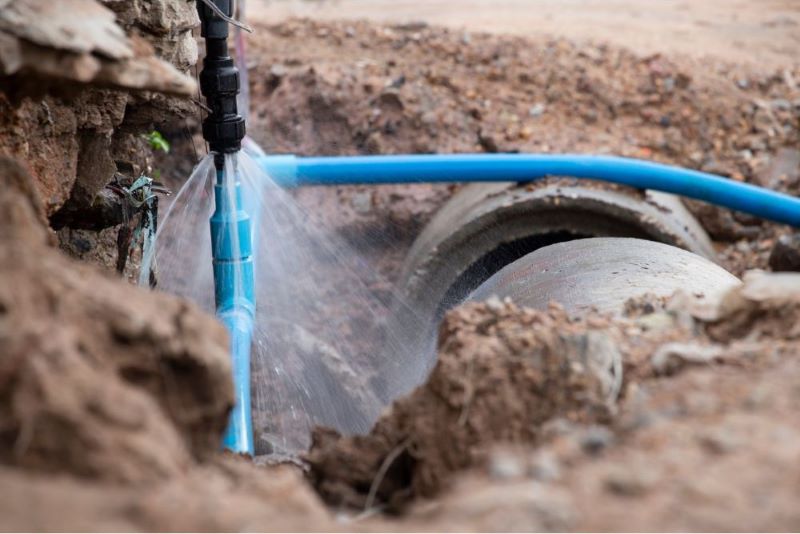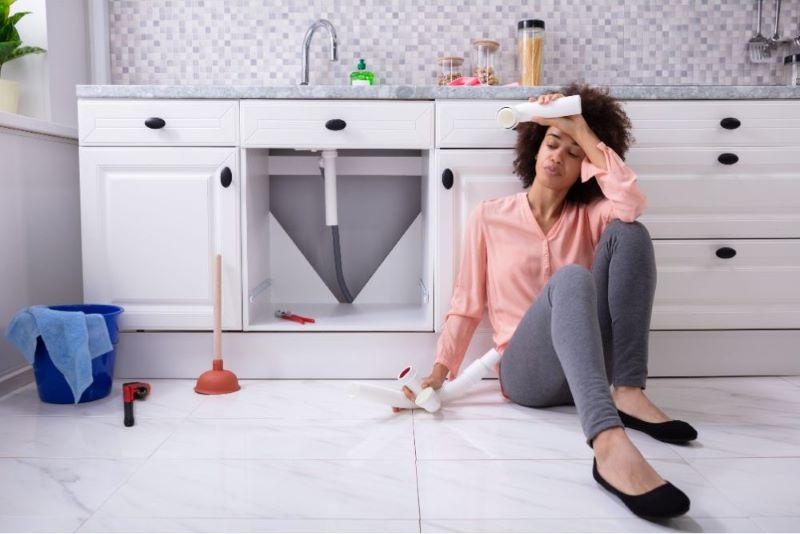During the winter season, you may have often heard about burst or broken pipes, mains, or sewage. Even at home, you may have faced this issue of a pipe breaks at home. The leaking water can lead to water damage, which in turn may lead to the growth of mold. Calling water damage restoration and mold remediation should be the first thing you do.
What to Do About a Broken Pipe While I Wait?

A burst pipe can be a homeowner’s worst nightmare. Water spewing everywhere, the potential for damage—it’s enough to send anyone into a frenzy. But fear not! By following these steps, you can minimize the damage and get your home back on track:
Step 1: Stop the Flow
- Act Quickly: Time is of the essence! The longer water flows, the more damage it can cause.
- Locate the shut-off valve. This valve controls the water supply to your entire home. It’s usually located near the water meter (often outside by the curb), in the basement, or near the washing machine.
- Turn Off the Valve: Most shut-off valves turn clockwise to shut off the water. If you have a lever valve, simply turn it perpendicular to the pipe.
Pro Tip: If you can’t find your main shut-off valve, locate the shut-off valve for the specific appliance or area where the pipe bursts. This will help minimize water flow while you find the main valve.
If you can begin to trace where the water has traveled/is traveling (which is more difficult than you’d expect – that’s why we used a variety of specialized moisture detection meters), remove obstacles from its path, especially if they can soak up the water. This includes:
- Carpets
- Curtains
- Furniture
- Anything made out of wood

Step 2: Assess the Damage
- Once the water is off, evaluate the situation. Is the burst a small leak or a major crack? Where is the broken pipe located?
- Turn off electronics: If the burst pipe is near electrical outlets or appliances, turn them off at the breaker box to prevent electrical hazards.
If the water has gone everywhere, you may need a way to begin removing it. Restoration companies use high-powered extraction equipment, however, if you want to get started immediately, you could use a portable sump pump and a shop vacuum (be sure to remove the paper filter first). Where there’s water and electricity, there’s always the risk of an electric shock, so please don’t attempt to perform any work you aren’t 100% comfortable with.
Step 3: Contain the Water
- Mop Up Standing Water: Use towels, blankets, or a wet/dry vacuum to remove as much standing water as possible. The faster you remove the water, the less damage it can cause to your floors and belongings.
Step 4: Address the Leak (optional- for small leaks)
- For small leaks, if you’re comfortable and have the necessary tools, you can attempt a temporary fix.
- Shutoff Valves: Some leaks occur near shutoff valves attached to specific fixtures. Tighten the packing nut on the valve stem with a wrench to stop the leak.
- Pipe Clamps: For minor cracks on exposed pipes, you can use a pipe clamp as a temporary fix. Tighten the clamp around the crack to create pressure and stop the leak.
Important Note: If you’re not comfortable fixing the leak yourself, or if it’s a major burst, don’t attempt repairs. Move on to Step 5.

Step 5: Call a Plumber
- Don’t hesitate to call a professional plumber! They have the expertise and tools to diagnose the problem, repair the broken pipe, and ensure no hidden damage exists.
Step 6: Dry Out Your Home
- Once the plumber has fixed the leak, focus on drying out your home. Open windows and doors to promote air circulation. You may also want to rent fans or dehumidifiers to expedite the drying process.
- Inspect Walls and Carpets: For leaks that cause significant water damage, check walls, floors, and carpets for signs of moisture. Mold can grow quickly in damp environments, so prompt drying and addressing any mold growth are crucial.
Step 7: Contact Your Insurance Company:
- File a claim with your homeowner’s insurance company to cover the cost of repairs and any damaged belongings. Document the damage with photos and videos before starting repairs.
Remember: A burst pipe can be stressful, but by acting quickly and following these steps, you can minimize the damage and get your home back to normal as soon as possible.
In the case of water damage, you should always consider calling a local restoration company. Time is of the essence when it comes to addressing water damage. The longer you wait to begin the drying process, the more the project expands. If a restoration company asks for more than 4-6 hours to respond, try calling another.
Major Restoration is well-known for its 30-minute emergency response time. If you experience water damage, mold, or a fire emergency, give us a call, and we’ll come running!

